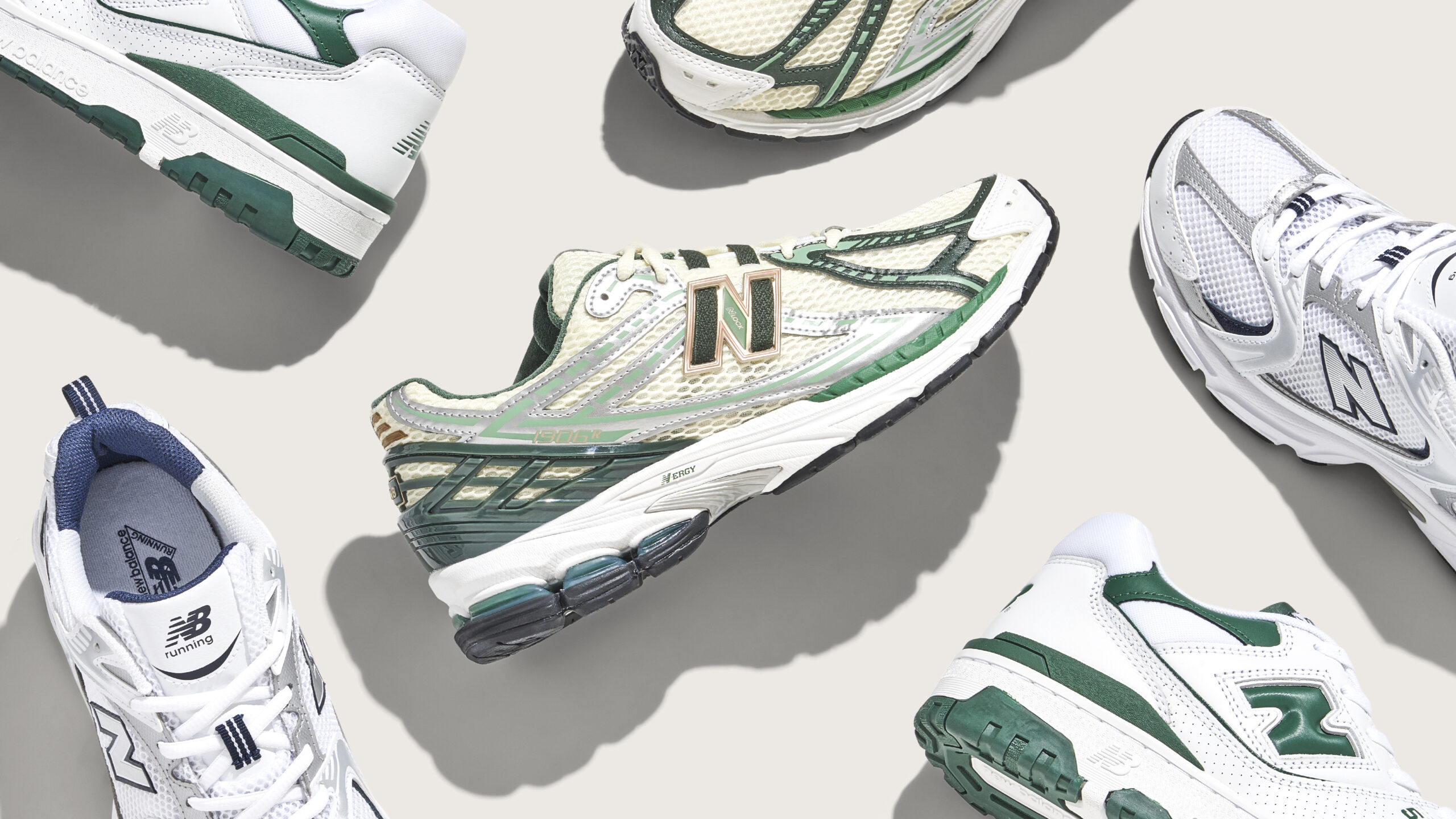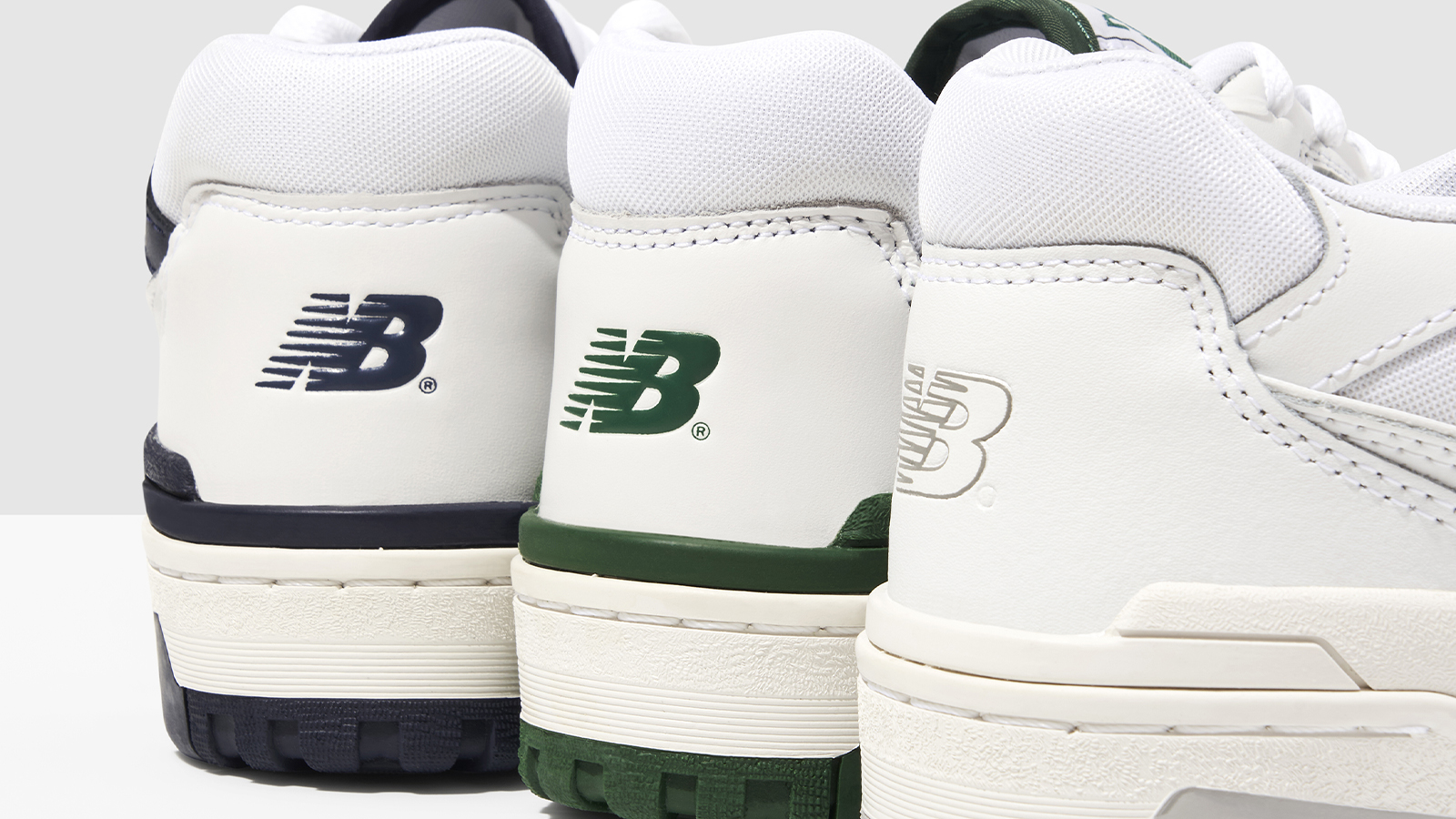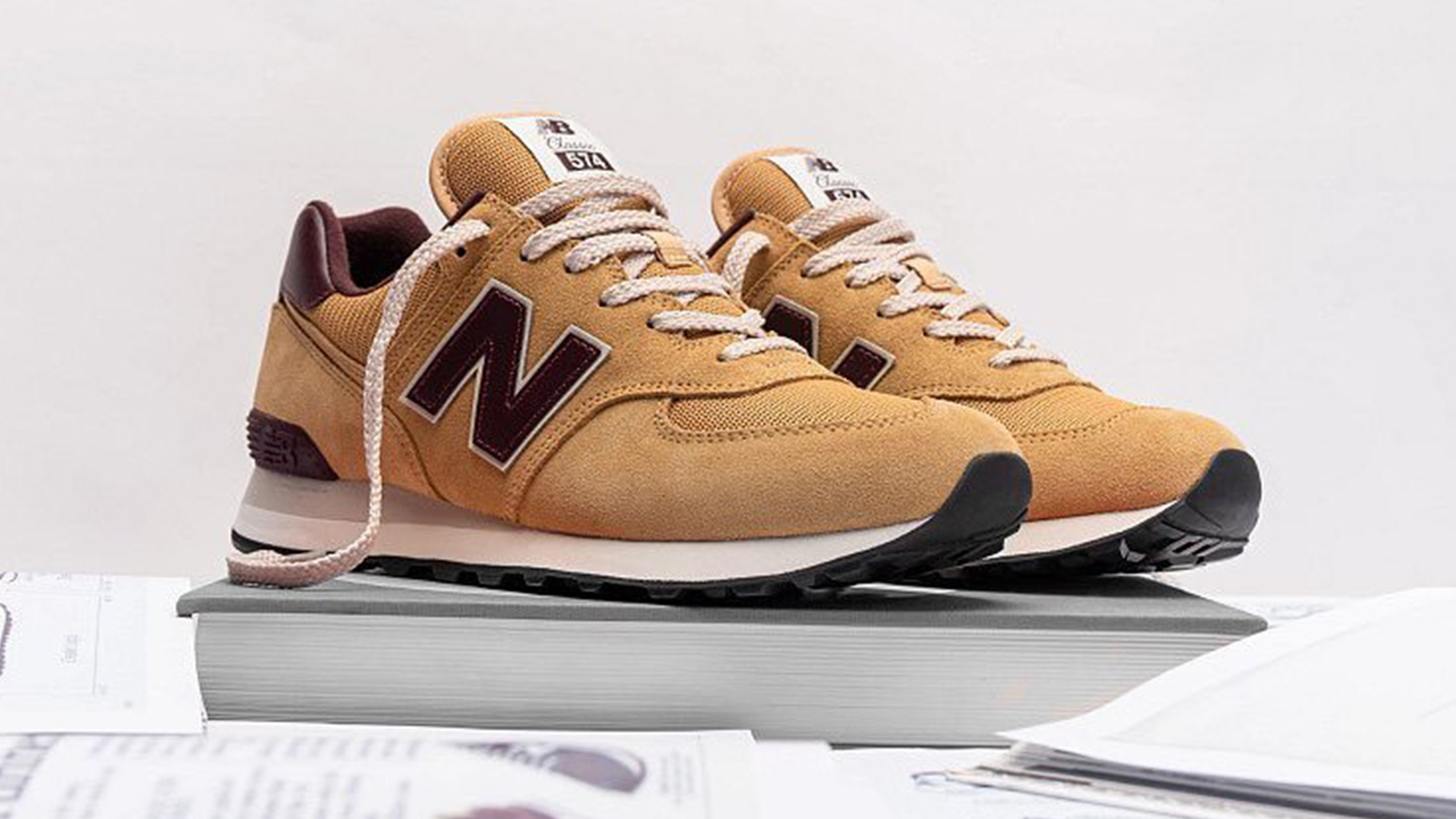From humble hand-made beginnings, to collaborating with some of the most exciting designers on the planet, New Balance has come a long way in it’s 117 years. With such a long history, it can be easy for things to get missed — here’s everything you need to know about New Balance.
1906-1934: New Balance’s Origins
Irish immigrant William J Riley first started The New Balance Arch Support Company in 1906, after seeing how chickens (hence the occasional referential rooster still found in the lid of shoe boxes) managed to stay perfectly balanced on their three pronged feet. Initially not offering the sneakers the brand is now known for, instead a simple arch support designed for workers who spent all day standing up.
The business was a far cry from the sneaker juggernaut it is today, and with only one product available it would take 21 years for the product to become popular enough for Riley to hire a salesman. A man by the name of Arthur Hall, who, as a travelling salesman focussed efforts on selling the arch support product to workers, along with public servants like firefighters and police in Rhode Island. Hall would later go on to become a partner in the business seven years later in 1934.
By maintaining the focussed offering of a niche product, New Balance managed to avoid the fate of many businesses during the economic fallout of the Great Depression, despite the $5 price tag being relatively expensive for the time. Riley and Hall only expanded its offering after the recovery of the markets in the US.
That first product expansion? A pair of running sneakers for a young athlete named Danny McBride in 1938. These first sneakers, designed by Riley were made from a kangaroo leather and featured a crepe sole, and bears little resemblance to what we’d recognise as a running sneaker today.
1938-1960s: Expansion and Evolution
After the success of their running shoe, New Balance continued to expand efforts into other sports. With all products being made in-house by a small team, it meant volumes remained fairly low but nonetheless, New Balance began offering tailor made footwear for a range of sports such as baseball, tennis and boxing.
Remaining local due to the low volume output meant that New Balance found success with the local Major League baseball team, the Boston Braves.
Hall eventually sold New Balance to his daughter, Elenore and her husband, Paul Kidd in 1956, over five decades after the founding of the company and almost 30 years after the initial foray into athletic footwear. Initially the Kidd’s retained the company’s focus to be on orthopaedic footwear which resulted in a short-lived renaming of the company to ‘New Balance Orthopaedic Laboratory’ — a name that lived up to America’s science obsession during the space race era of the 1960s.
It soon became clear, however, that New Balance’s future lay in sportswear, with ‘The Trackster’ becoming the Kidd’s first non-professional sports shoe. Made at home by the couple, to maintain the offering of custom, wider-fitting footbeds the sneakers quickly became popular with the increasingly popular jogging community that was taking America by storm in the late ‘60s and ‘70s.
The Trackster featured an all-white upper, with contrasting panels in a striking dark red. While resembling a familiar running shoe silhouette, the now iconic ‘N’ branding wouldn’t arrive on pairs of New Balance sneakers until over 15 years later.
1972-1980: Growth and launch of the 320
On the day of the Boston marathon in 1972, New Balance was bought by businessman Jim Davis for $100,000. The team at the time still only consisted of six people, making only 30 pairs of sneakers a day. New Balance had stopped sponsoring professional teams, embracing the mantra ‘endorsed by no one’, the company’s focus was on delivering great products, customer service and unique experiences to their buyers.
Four years after purchasing the brand, Davis oversaw the release of the first sneaker to feature the New Balance ‘N’, and began the naming convention the brand follows today.
The 320 started the numerical naming of New Balance products, with the aim of creating shoes that all customers saw as equal in performance, but designed for different uses. Each numbered shoe signified the intended use, the type of shoe and whether the sneaker was designed for stability, speed etc.
New Balance continued to release more mass market sneakers throughout the 1970s, along with their first athletic clothing, that consisted of cutting edge GORE-TEX running tracksuits, mesh tops and shorts.
In 1980 New Balance launched the 640 model — at the time the most advanced running sneaker available. It was another milestone for the brand, with the first sneaker to breach the $50 retail price tag.
1982-1993: Enter the 990
With the handmade styles now firmly in the brands past, New Balance spent the next decade releasing models that would go on to be some of the most recognisable sneakers available.
In 1982 the 420 is released, continuing the established design motifs of previous outings — a nylon and suede upper and foam midsole, with large branding adorning the sides. The 420 would release in a wide range of colours over the following years and remains one of the brand’s most popular silhouettes.
That same year, New Balance would release a sneaker that 40 years later is still being iterated on and is frequently the subject of designer collaborations.
‘Worn by dads in Ohio and supermodels in London’, as the ad famously proclaims.
The 990 (later adopting the ‘v1’) was the first sneaker to retail at $100, after four years of development. Another pioneering moment for the once six person brand.
In the decades to follow the 990 would receive six further versions, each showcasing significant technological developments and changing tastes, but maintaining the signature hefty midsole, and always showcased first and foremost in the light grey colourway.
1982 continued to be a milestone year for New Balance, as the brand opened its first UK factory, completing the full circle journey that was started by its immigrant founder over 75 year earlier.
The following decade saw production of new silhouettes grow. Four more models were released, adding to the numerical lineup; the 670 in 1984, which is another sneaker that remains popular today, 1985 saw the 1300, which was the most expensive (and best according to the brand) running shoe ever made at $130, in 1988 the 574 released to much acclaim due to its superior comfort — the shoe would transition from running trainer into more a more casual, less performance focussed style culminating in a reworked iteration in 2017.
In 1993, New Balance released the 1500, a shoe that saw huge sales thanks to regularly being seen in use on runs by the recently inaugurated 42nd President of the United States, Bill Clinton.
1994-2001: Subcultures & Y2K
The second half of the ‘90s was relatively undramatic for New Balance. The brand continued to release further sneakers to their lineup, but is was the adoption of their styles into subcultures that really saw the stage set for where New Balance would end up in 2023.
Throughout the late ‘80s and early ‘90s New Balance had been brought into the aesthetic of various underground subcultures. Unlike Nike’s dominance of popular culture in this era thanks to widespread celebrity endorsement and association, New Balance’s presence was decidedly more low-key.
Hardcore bands who started to wear the sneakers in the late ‘80s were still looking to New Balance’s more pared back styles for their uniform. New Balance was one of the few brands that offered styles with no animal products, which fit into the ‘straight-edge’ lifestyle of many who belonged to the Hardcore scene. One band in the late ‘80s even peformed under the name ‘New Balance’.
The brand also found a home within the emerging youth culture of Washington D.C. in the ‘90s. The subtler colour palette and status symbol of the $100 price point made sneakers like the New Balance 990 to be seen as worn by “guys in the neighbourhood who had money” as commented by rapper Meek Mill in an episode of Sneaker Shopping on Complex’s youtube channel.
It was also the burgeoning tech sector that put New Balance literally on a stage for success — in 2001, the brand released the follow up to the iconic 990, the 991. An early adopter of this silhouette was Apple founder, and staunch uniform dresser, Steve Jobs. His look of an Issey Miyake turtleneck jumper, light blue Levi’s 501 jeans and a pair of grey New Balance 991 is synonymous with the launch of some of the 2000s most important technological announcements — The iPod, and the birth of the digital music revolution, and the iPhone which fundamentally changed the way the world viewed personal computing.
2003-2012: Endorsements
Despite the their ongoing ‘Endorsed By No One’ approach, the 2000s saw New Balance embrace athletes or celebrities who wanted to wear their products, firstly with sports stars from the NBA, like Matt Bonner or baseball with Miguel Cabrera and Curtis Granderson.
In 2012, New Balance would again see their sneakers on the feet of the President, this time a fully custom pair of 990s. Part of their Made in the USA line, the sneakers were made for Obama in the run up to re-election to showcase the importance of American manufacturing. Classic grey with ‘Obama’ embroidered on the heel, they were a signifier of how far New Balance had come. The 106 year history that started with one man selling arch supports to a household name, outfitting everyone from musicians to athletes to Presidents.
2023: Collaborations
At the core of New Balance’s more recent success has been the partnerships they’ve been able to foster and release collaborations with.
Brands seem to line up to put their unique spins on New Balance’s silhouettes, with notable releases coming from tastemaker brands such as Jjjjound and Aries Arise, who have both released versions the 990 — Jjjjound’s taking on the brands decided subtle approach to design to make for likely the most low-key brand match-up in recent memory.
More standout collaborations from footwear designer Salehe Bembury come in the form of bright orange or teal brushed suede 2002Rs, a style that New Balance has recently brought back out of their archives and breathed new life into with not just this collab but the hugely successful ‘Protection Pack’ which featured a number of colourways on a distressed suede upper.
New Balance has found great success partnering with the tastemaker brands of the era, with the most notable being Aimé Leon Dore. A joint effort that started in 2019 with a release of the 997 — the shoe featured a light grey upper with mis-matched neon accents, and felt distinctly retro in its design approach (a feeling that would continue throughout the collaborations that followed).
The two brands shared four more releases of various New Balance models, including ALDs take on two versions of the 990, the v2 and v5, both delivered in dark hunter green and navy — but it was a fairly forgotten basketball shoe from 1985 that would launch the partnership to new heights.
The Nike Dunk’s popularity was at a fever pitch and Aimé Leon Dore founder and creative director, Teddy Santis, managed to find the shoe that would draw people away from the Dunk. The 550.
It’s surprising that the rerelease of the 550 was only three years ago considering its widespread popularity and recognition now. When ALD first released their collaborative pairs, they were as subtle as can be, with only the most minimal branding on the tongue and heel. Once again pulling from a retro sensibility, the sneakers were predominantly white, with red, navy, green or grey contrasts and an off white midsole that gave the feeling of a sneaker from decades past.
New Balance would go on to offer general release pairs both in the same original ALD colours and every possible variation, but despite the widespread availability of the 550, the pairs designed in partnership with ALD remain some of the most sought after.
Teddy Santis would go on to be appointed the creative director of New Balance’s ‘Made in the USA’ line, where he continues to oversee the development of new iterations of classic styles like the recently released 990v6. Along with his appointment in-house, ALD continues to release collaborative sneakers withe New Balance, most recently helping in popularising another archive runner style, the 1906R. Aptly named for the year of New Balance’s birth.
New Balance now sits shoulder to shoulder with the giants of the sneaker market like Nike and adidas, and despite the slower rise to prominence the small brand from Massachusetts has had over it’s almost 120 years, the co-signs and constant sell-out releases make it clear that maybe slow and steady does win the race.
Numbering Guide
All New Balance sneakers follow a naming system to determine their intended use and design features — the following is the official guide from New Balance.
40 (Optimal Control)*: Shoes in this category provide superior control, stability, cushioning and support for biomechanical needs, such as pronation or low arches (e.g., 940, 1540).
*With the exception of the 840v4 running & 840v2 walking. These styles are neutral cushion styles.
50 (Fitness Running): For training on roads or for indoor workouts, the 50 series offers the combination of visual attitude and innovation with the responsiveness and power athletes need.
60 (Stability): Designs that offer industry-leading stability to reduce pronation while also providing unparalleled cushioning and comfort (e.g., 860).
70 (Light Stability):The perfect combination of stability and speed, all in a lighter, sleek profile designed for runners who train at a faster pace (e.g., 770).
80 (Neutral): For high-mileage runners who require light shoes and the protection of superior cushioning (e.g., 1080).
90 (Speed)*: For faster runners who want every advantage, including a superior ride and fit. The choice styles for professional and nonprofessional speed and distance runners (e.g., 890).
*With the exception of the 990v5 and its predecessors.
The letters after the numbers generally indicate the major colors of the shoe. For example, WB indicates white and blue and BK indicates black. A number following the style and color is the version number. So, a M990BK5 = Men’s 990, Black.



